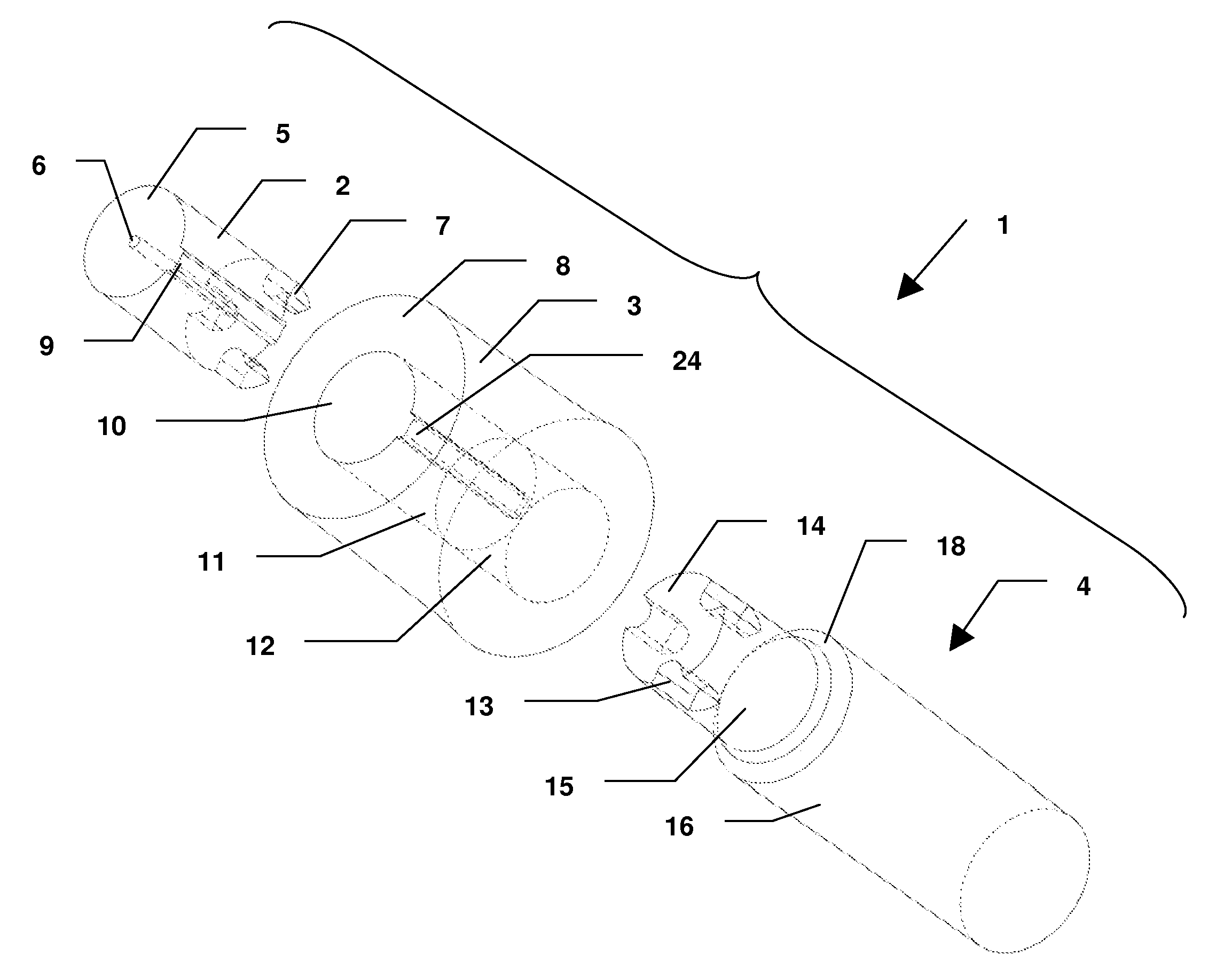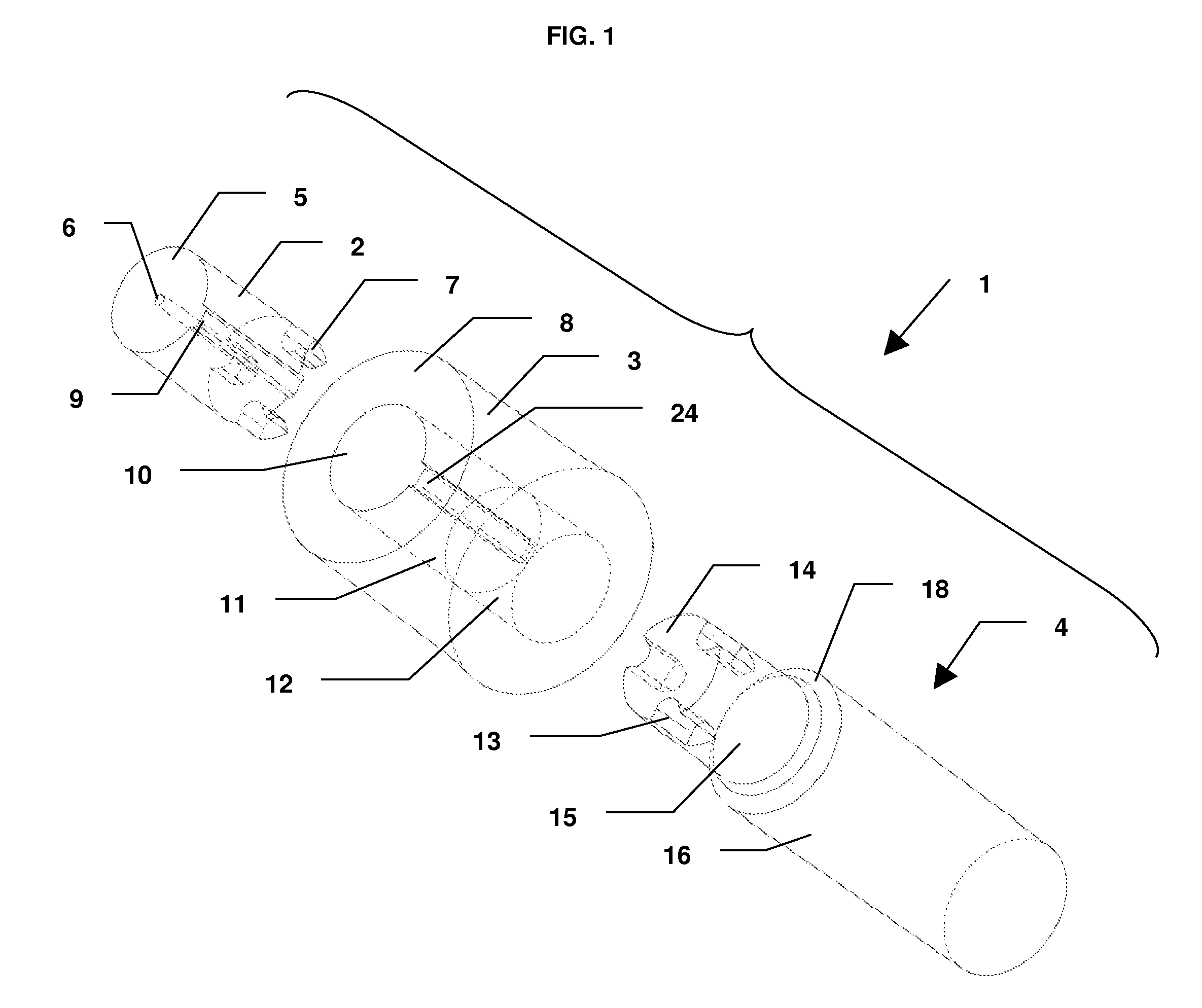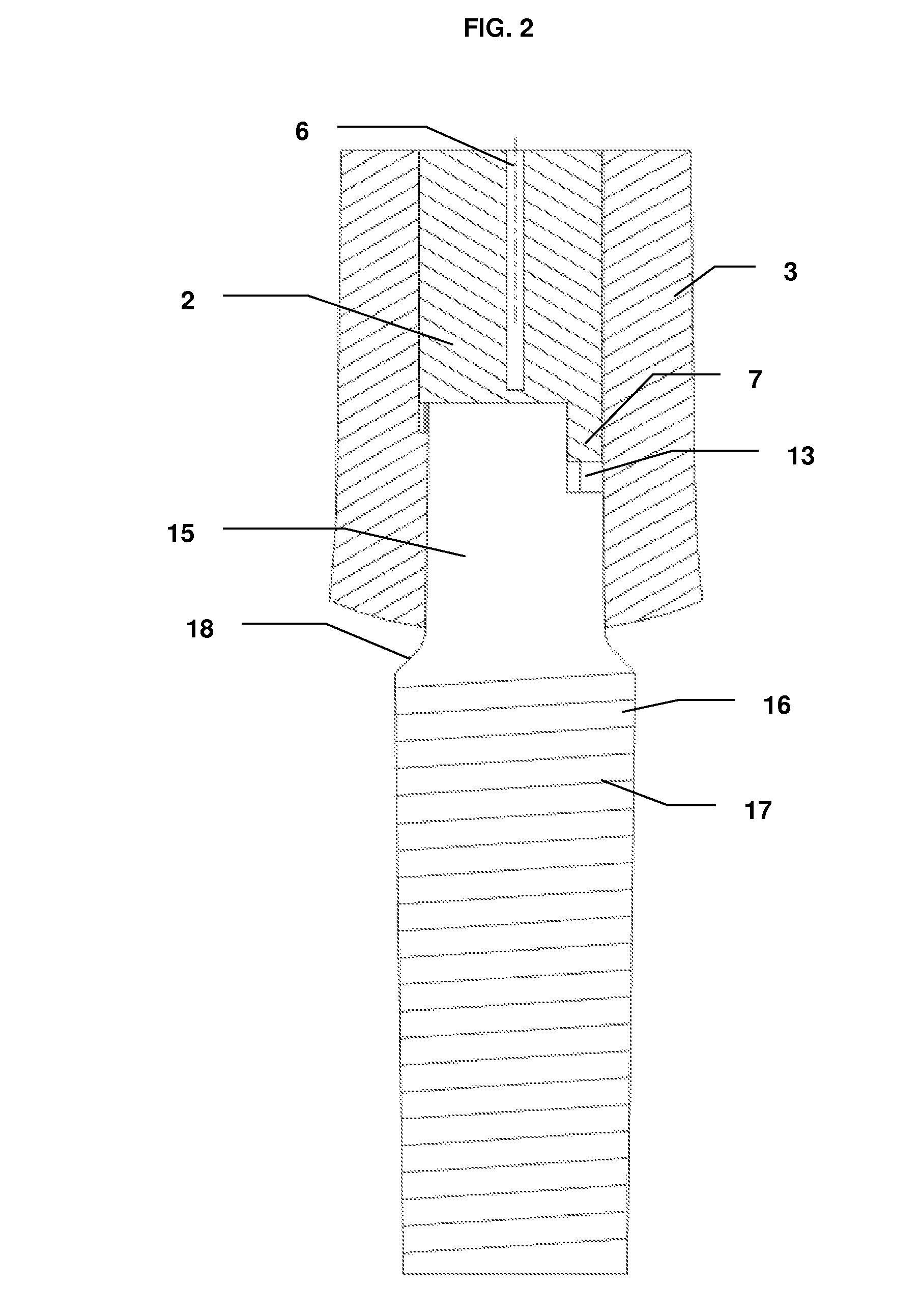Dental Implant System and Method
- Summary
- Abstract
- Description
- Claims
- Application Information
AI Technical Summary
Benefits of technology
Problems solved by technology
Method used
Image
Examples
Embodiment Construction
[0054]Referring now to the drawings, in which like reference numerals are used to refer to the same or similar elements, FIG. 1 shows a dental implant system 1 comprising an implant member 4 or body / fixture, an abutment member 3 and a transfer key 5. The implant member 4 includes an anchoring portion 16 on one end for anchoring the implant member 4 in the patient's jaw bone, and an abutment receiving portion 15 or post on the other end. The end of the anchoring portion 16 adjoining the abutment receiving portion 15 may be provided with a shoulder 18, such as a downwardly and outwardly sloping shoulder. Preferably, the anchoring portion 16 is provided with external threads 17 (FIG. 2). The anchoring portion 16 may be formed integrally with the abutment receiving portion 15, or connected to each other to form the implant member 4. The abutment member 3 may be straight or angled. FIGS. 3A and 3B respectively show a top and side view of an implant member of the present invention.
[0055]A...
PUM
 Login to View More
Login to View More Abstract
Description
Claims
Application Information
 Login to View More
Login to View More - R&D
- Intellectual Property
- Life Sciences
- Materials
- Tech Scout
- Unparalleled Data Quality
- Higher Quality Content
- 60% Fewer Hallucinations
Browse by: Latest US Patents, China's latest patents, Technical Efficacy Thesaurus, Application Domain, Technology Topic, Popular Technical Reports.
© 2025 PatSnap. All rights reserved.Legal|Privacy policy|Modern Slavery Act Transparency Statement|Sitemap|About US| Contact US: help@patsnap.com



